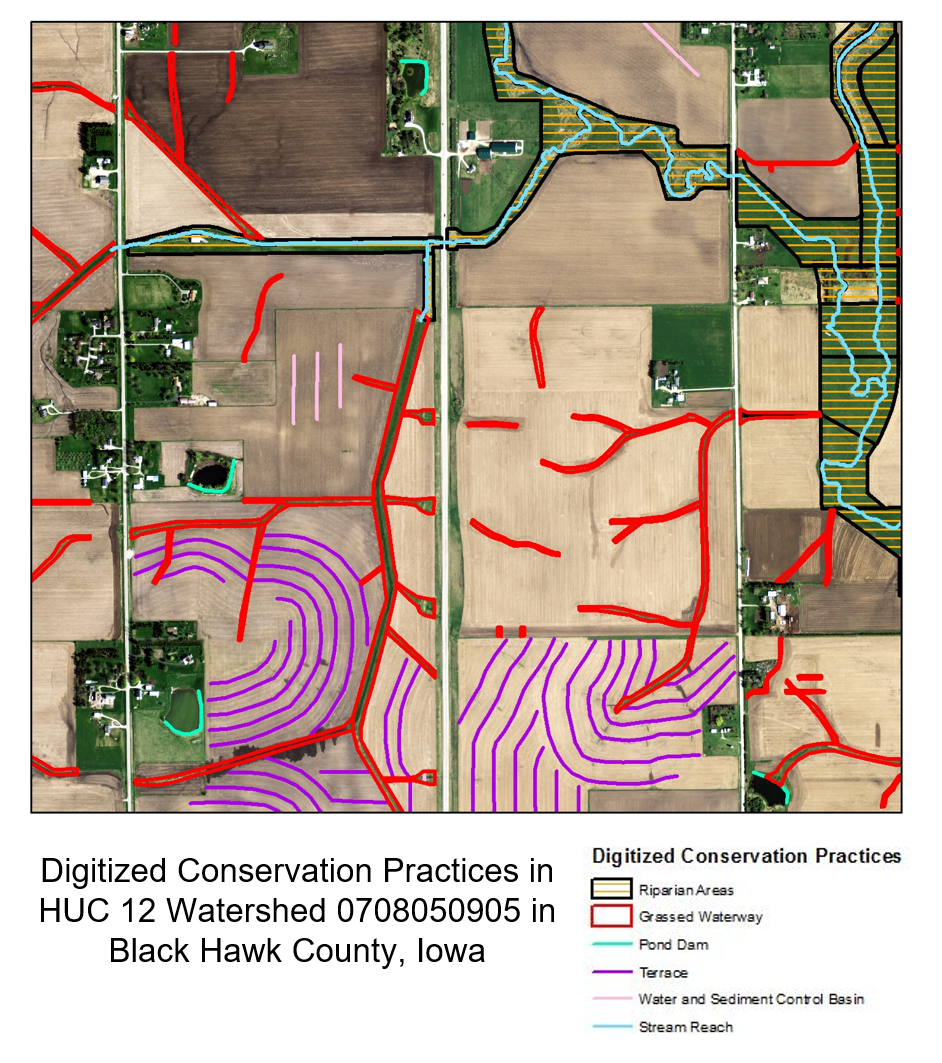The Iowa BMP (Best Management Practices) Mapping Project provides an accurate inventory of BMPs which are essential to establish baseline conditions and document implementation resulting from the Iowa Nutrient Reduction Strategy. The Iowa Nutrient Reduction Strategy (INRS) is a guiding document which uses science and technology to assess and reduce nutrients in Iowa waters and the Gulf of Mexico. This project fulfills the priority of the INRS document by providing a meaningful record of the in-field and off-field conservation practices for reducing erosion and nutrient loss. While individual organizations and programs often keep track of the practices that they install or advocate, the State of Iowa has lacked a comprehensive database of practices in each watershed. Our research is dedicated to completing this database for the entire state.
Click to view Watershed Status Map

In 2017, IowaView received a mini-grant from AmericaView to create comprehensive documentation about the Iowa project in the form of a handbook and several tutorials for those interested in using the process to develop a similar inventory for their state. If you have questions or would like more information about this project, please contact Robin McNeely or Amy Logan.
Iowa Best Management Practices Mapping Handbook – This document provides an overview of the Iowa BMP project and three associated projects. It provides background on the project, information about the data structure and necessary input data, descriptions and images of the conservation practices, management considerations, and additional documents needed for project tracking. Follow this link for the tutorials, accessory data and documents.
Each semester since the spring of 2015, student interns have been digitizing six specific management practices in watersheds across the state. Over 1,400 watersheds have been completed. Completed data is available for download at: http://www.gis.iastate.edu/gisf/projects/conservation-practices. This project has continued because of strong collaboration among different funding partners, including AmericaView and state government agencies as well as private industry.
